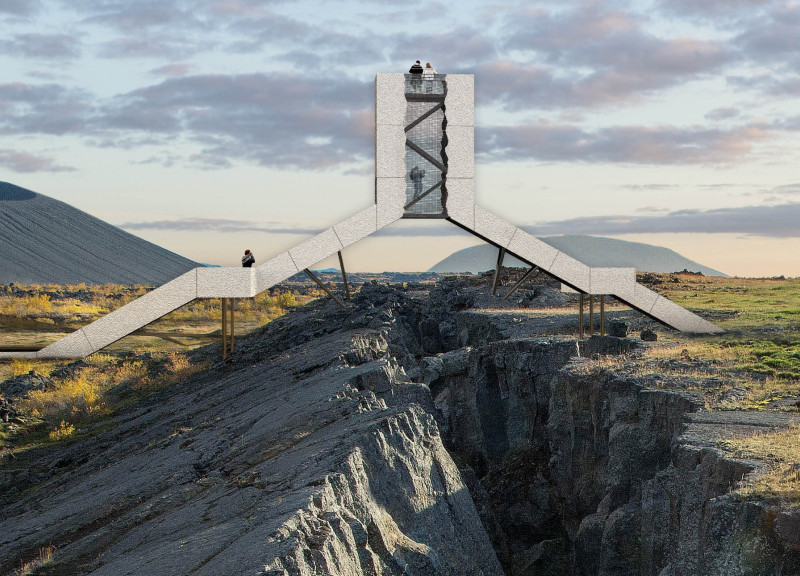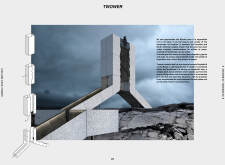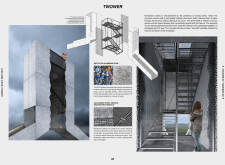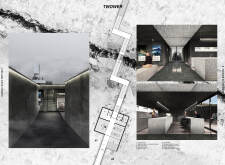5 key facts about this project
The Iceland Cave Tower, known as Twower, is located in the Myvatn area of Iceland, a region shaped by the interaction of the Eurasian and North American tectonic plates. The tower serves both as a landmark and an educational facility. Its design focuses on fitting into the stunning landscape, offering visitors a chance to engage with the surrounding natural features.
Architectural Context
The design of Twower is centered on blending with its geographical setting. The tower is placed strategically to attract visitors approaching from Route 1 near Reykjahlíð. As people move through the landscape, the structure becomes visible, connecting them to the unique geological features nearby. The form of the tower reflects the natural contours of the earth, particularly the line of the fissure that defines the area.
Underground Facilities
A key feature of the design is the extensive use of underground facilities. These include a café, exhibition spaces, and offices, which help to reduce the visual footprint of the building. By keeping much of the structure below ground, the above-ground components—primarily the tower and its stairs—remain prominent. This approach offers a clear way for visitors to interact with the environment while preserving the landscape’s natural appeal.
Visitor Experience
The layout is carefully designed to enhance the visitor experience. An entrance ramp with an 8% slope allows easy access for all. This leads to a patio area that supports social interaction among visitors. Close by, the exhibition space provides information about the geology of the site. A prominent stairwell guides visitors up to an observation platform, which offers panoramic views of the surrounding land. This thoughtful arrangement creates a strong connection between visitors and nature.
Material Considerations
Material choices play an important role in the overall design. Dark grey concrete is used for the stairs, aligning with the natural colors of the area. Recycled aluminum foam board contributes to sustainability by using repurposed material, while galvanized steel ensures strength and safety for the stairwell and mesh elements. Each material supports the structure’s purpose while reinforcing its relationship to the landscape.
As visitors approach the tower, they notice how the surface of the aluminum foam reflects the colors and light of the environment. This subtle detail enhances the connection between the built form and the natural surroundings, allowing for a richer experience of the site.






















































